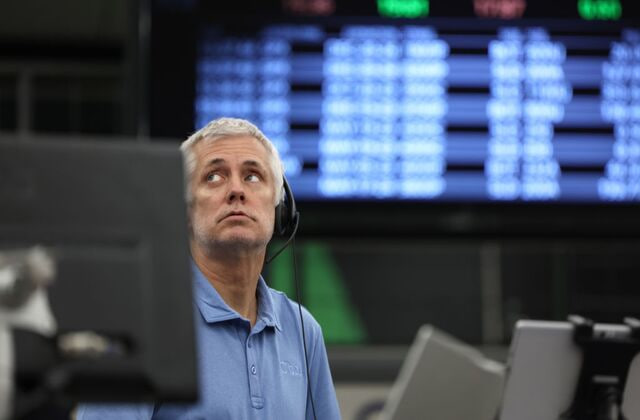Denmark's Rate Cut: A Deep Dive into the Implications for the Danish Krone and Global Markets (Meta Description: Denmark interest rate cut, Danish Krone, global markets, monetary policy, inflation, economic outlook, central bank, financial markets)
Did you hear the news? Denmark just slashed its key interest rate! This isn't just another dry economic announcement; it's a seismic shift that could ripple through global markets, impacting everything from your vacation plans to your investment portfolio. Hold onto your hats, because we're about to unpack the full implications of Denmark's bold move, going beyond the headline numbers to explore the underlying economic forces at play. We'll delve into the intricacies of monetary policy, examine the potential impact on the Danish Krone (DKK), and consider what this means for international investors. Forget those boring economics textbooks – we're going on a thrilling, insightful journey through the world of finance, weaving together expert analysis with real-world examples. This isn't just data; this is a story of economic strategy, global interconnectedness, and the unpredictable dance of financial markets. Are you ready to unravel the mystery behind this significant rate cut? Let's dive in! Prepare to be surprised by what we uncover – this isn't just about numbers, it's about people and their livelihoods, impacted by these seemingly abstract economic decisions. Get ready to broaden your understanding of global finance, and perhaps even polish your own investment savvy along the way! We'll even tackle some frequently asked questions, ensuring you leave with a clear, concise, and comprehensive understanding of this fascinating event.
Denmark's Interest Rate Cut: A Detailed Analysis
The recent decision by the Danish National Bank (Danmarks Nationalbank) to lower its key interest rate from 2.85% to 2.6% marks a significant development in the country's monetary policy. This isn't a knee-jerk reaction; it's a calculated move responding to a complex interplay of economic factors. Let's break down the key elements:
The Rationale Behind the Cut:
The primary driver behind the rate cut appears to be a softening in inflation. While inflation remains a concern globally, Denmark has seen a slight easing in recent months. The Danmarks Nationalbank likely aims to prevent a sharp economic slowdown by stimulating borrowing and spending. Think of it as a carefully calibrated injection of economic adrenaline. However, this also runs the risk of fueling inflation in the long run. It's a delicate balancing act, a high-stakes game of economic chess.
Impact on the Danish Krone (DKK):
The rate cut is expected to exert downward pressure on the DKK. Lower interest rates make the currency less attractive to foreign investors seeking higher returns, potentially leading to a depreciation against other major currencies. This could benefit Danish exporters by making their goods more competitive internationally, but it could also increase the cost of imports. It's a double-edged sword, requiring careful monitoring and analysis.
Global Implications:
While primarily affecting Denmark, the rate cut sends ripples throughout the global financial system. It reflects a broader trend of central banks adjusting their monetary policies in response to evolving economic conditions. The interconnectedness of global markets means that Denmark's decision could influence the strategies of other central banks and impact investor sentiment worldwide. We're not just talking about isolated incidents; we're talking about a global web of economic influence.
Alternative Perspectives and Expert Opinions:
Not everyone agrees with the Danmarks Nationalbank's decision. Some economists argue that the rate cut is premature, potentially jeopardizing the fight against inflation. Others believe it's a necessary step to prevent a deeper economic downturn. This divergence of opinion highlights the complexity of economic forecasting and the inherent uncertainties involved in monetary policy decisions. It's a field brimming with diverse viewpoints and heated debate.
Long-Term Outlook:
The long-term impact of the rate cut remains uncertain. Much depends on future economic developments, both within Denmark and globally. The Danmarks Nationalbank will closely monitor key economic indicators such as inflation, employment, and growth to determine future policy adjustments. It's a dynamic situation, ever-evolving and requiring constant vigilance.
Understanding Monetary Policy in Denmark
Denmark’s monetary policy operates within a framework of flexible exchange rates, meaning that the value of the DKK fluctuates based on market forces. However, the Danmarks Nationalbank actively manages monetary policy to achieve its inflation target. This involves using interest rates as a primary tool to influence inflation and economic growth. The rate cut demonstrates a shift towards a more accommodative monetary policy, aiming to stimulate economic activity. But remember, this is a complex dance – a delicate balancing act between stimulating growth and controlling inflation.
The Danish Krone (DKK): A Closer Look
The DKK’s value is influenced by a variety of factors, including interest rates, global economic conditions, and investor sentiment. The recent rate cut is likely to impact the DKK’s exchange rate in the short to medium term. However, other factors such as global economic growth and geopolitical events can also significantly influence the DKK's performance. Don't just focus on the rate cut; consider the bigger picture.
Frequently Asked Questions (FAQs)
- Q: What does this rate cut mean for everyday Danes?
A: In the short term, it might lead to slightly lower borrowing costs for mortgages and loans, potentially boosting consumer spending. However, the impact on individual Danes will depend on various factors, including their financial situation and spending habits.
- Q: Could this lead to higher inflation?
A: It's a possibility. Lower interest rates can stimulate demand, potentially pushing prices up. The Danmarks Nationalbank will be closely monitoring inflation to assess the impact of the rate cut.
- Q: How does this compare to other countries' monetary policies?
A: This is part of a broader trend of central banks adjusting their policies in response to global economic conditions. Comparing Denmark's actions to those of other major economies offers valuable context and insights.
- Q: Is this a sign of economic trouble in Denmark?
A: Not necessarily. It can be a proactive measure to prevent a more significant economic slowdown or to address specific economic challenges. The context is crucial.
- Q: What should investors do in response to this news?
A: Investors should carefully assess their portfolios and adjust their strategies based on their risk tolerance and investment goals. This is not financial advice; seek professional guidance.
- Q: When will we see the effects of this rate cut?
A: The effects will unfold gradually over time, impacting various aspects of the Danish economy and the DKK's value. It's not an immediate, dramatic shift.
Conclusion:
The Danmarks Nationalbank's decision to lower its key interest rate is a significant event with potential ramifications for Denmark and the global economy. While aimed at stimulating economic growth and mitigating potential slowdowns, it also introduces risks, primarily the potential for increased inflation. The coming months will be crucial in observing the impact of this policy change and assessing its long-term consequences. Remember, the world of finance is dynamic and complex. Stay informed, stay adaptable, and seek professional advice when necessary. The journey of understanding global economics is a continuous one, full of twists, turns, and unexpected discoveries.



